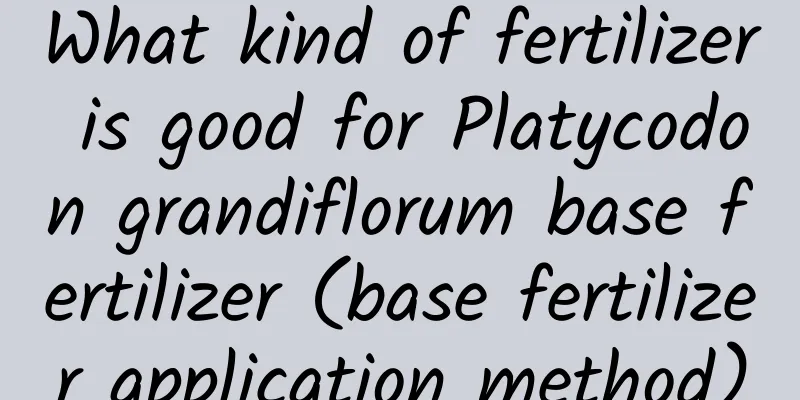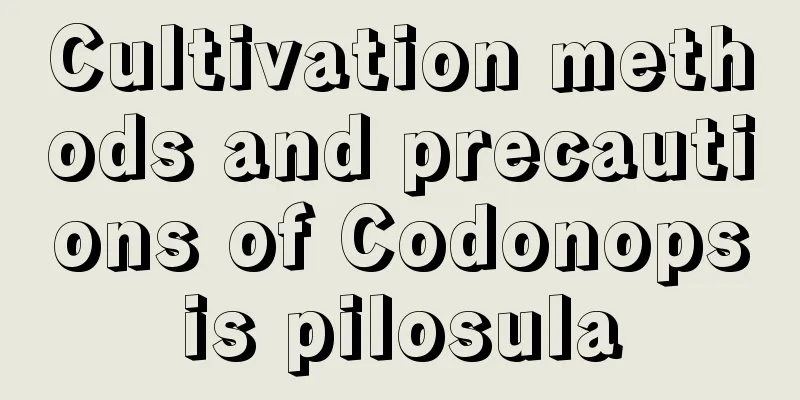What kind of fertilizer is good for Platycodon grandiflorum base fertilizer (base fertilizer application method)

Effect of Platycodon grandiflorum base fertilizerPlatycodon base fertilizer can be divided into indirect fertilizer and direct fertilizer. Direct fertilizer can directly provide various nutrients needed by Platycodon, while indirect fertilizer mainly affects the growth and development of Platycodon by improving the properties of the soil. Platycodon grandiflorum base fertilizer selectionPlatycodon uses biological organic fertilizer as base fertilizer. If there is none, use triple compound fertilizer. It is best to add potassium fertilizer in the later stage of growth, which can promote growth and increase yield. How to apply Platycodon grandiflorum base fertilizerWhen applying base fertilizer to Platycodon, you can dig a small hole around the plant and bury the fertilizer in it. The fertilizer should not be too close to the roots, but should be kept at a certain distance and not exposed to direct sunlight. How much base fertilizer should be added to Platycodon grandiflorumThe amount of base fertilizer applied to Platycodon grandiflorum is relatively large, generally accounting for more than 50% of the annual fertilizer application. If farmers' decomposed organic fertilizer is applied, 100-200 kg will be applied to each adult Platycodon grandiflorum, and 3-4 kg of lime will be added at the same time. Water-soluble fertilizer can be applied at a dosage of 5-10 kg per acre. How to apply fertilizer to Platycodon grandiflorumWhen renovating the soil for Platycodon grandiflorum, sufficient base fertilizer needs to be applied, and multiple topdressings need to be applied during the subsequent growth period to meet the growth needs of the plant, promote growth, and increase yield. 1. When the height of Platycodon grandiflorum seedlings reaches 15 cm, the first fertilizer can be applied. Human and animal manure, superphosphate, or ammonium sulfate can be applied to promote the healthy growth of the seedlings. 2. At the end of June and the beginning of July, before Platycodon grandiflorum blooms, combined with the second inter-row cultivation and fertilization, you can apply pre-flowering fertilizer, mainly human and animal manure, superphosphate or urea, superphosphate, and add soil after application to prevent rain erosion and plant lodging. You can also spray diluted dwarfing agent once in May after the first topdressing to control stem growth, thicken the plant and reduce lodging. 3. In August, you can combine inter-row cultivation and weeding with topdressing of fertilizers, such as human and animal manure and superphosphate. After winter, you can apply mixed fertilizers such as rotted manure, wood ash, compost, cake fertilizer, and superphosphate to the soil, mix them evenly, dig trenches beside the plants and apply them, cover with soil and fertilizer after application, and cultivate the soil. |
>>: How to make the first love succulent bloom
Recommend
How to grow traveler's banana and precautions
If some flower lovers have a spacious living room...
Don’t pour out the “waste water” in the future, give some to the flowers to “drink”, and each pot will grow vigorously!
In life, we think that some useless "waste w...
What to do if the leaves of hydroponic lucky bamboo turn yellow
The leaves of the newly bought lucky bamboo are t...
Can Phoenix Bamboo be watered with rice water? How often should I water it?
1. Can I use rice water to water the Phoenix bamb...
The most bizarre plants in the world
Rafflesia Rafflesia arnoldii, also known as the R...
Is Guangdong Evergreen poisonous?
1. Toxic This kind of plant is actually poisonous...
What is the reason for succulents to drop leaves? What should I do?
1. Normal metabolism Reason: If the old leaves at...
What are the cultivation methods and precautions of large-leafed green radish?
Introduction of Big Leaf Pothos Big-leafed green ...
Tips and methods for controlling diseases and pests of Milan flowers
Milan is also called Four-season Milan. Its leave...
Cultivation methods and precautions of ironwood
1. Light and soil requirements Ironwood is a posi...
How many years does it take for jackfruit to bear fruit?
Introduction to Jackfruit Planting Jackfruit is s...
If the green radish is frozen to death, will it grow again next year?
1. Will it grow longer next year? Whether it can ...
The efficacy and function of green vegetables
1. Laxative Green vegetables can improve the dige...
Can the fortune tree be pruned? If it grows too tall, how can it be trimmed into shape?
Can the fortune tree be pruned? The money tree ca...
Camellia varieties
1. Super Southern Warrior It has deep red flowers...









